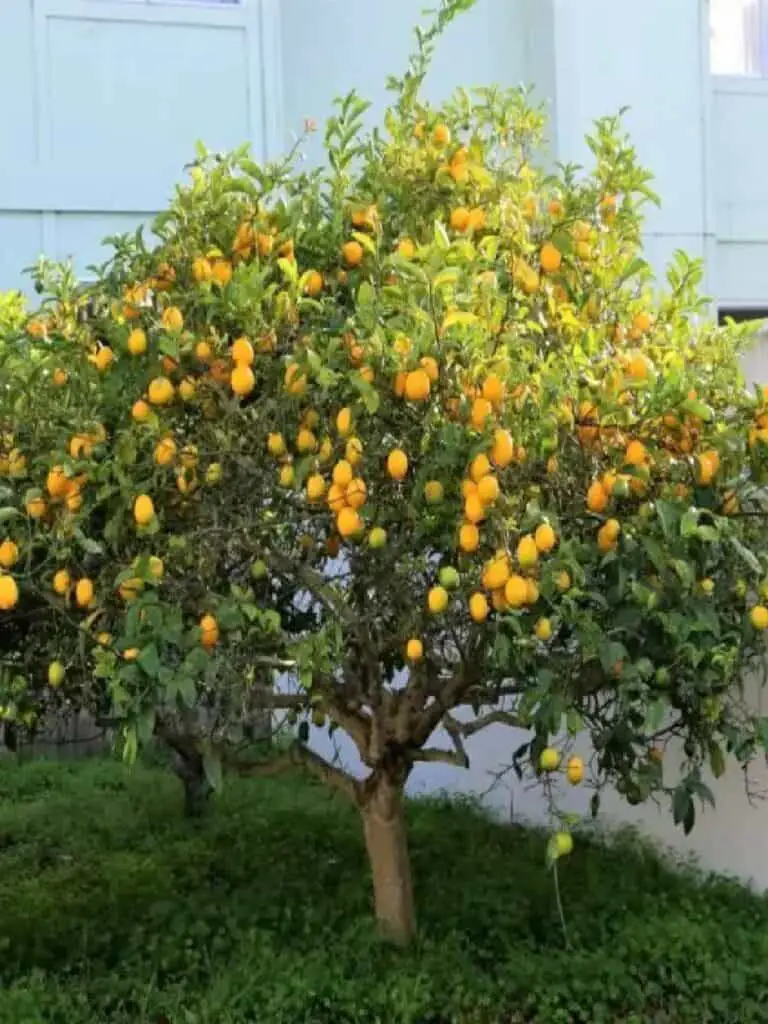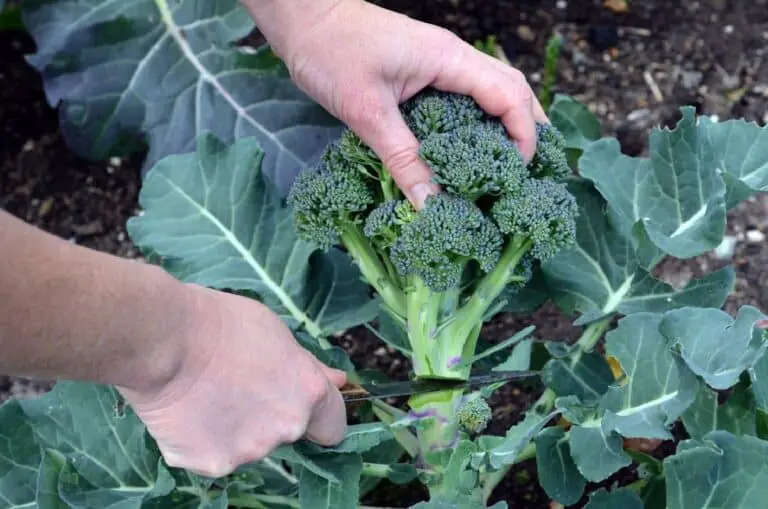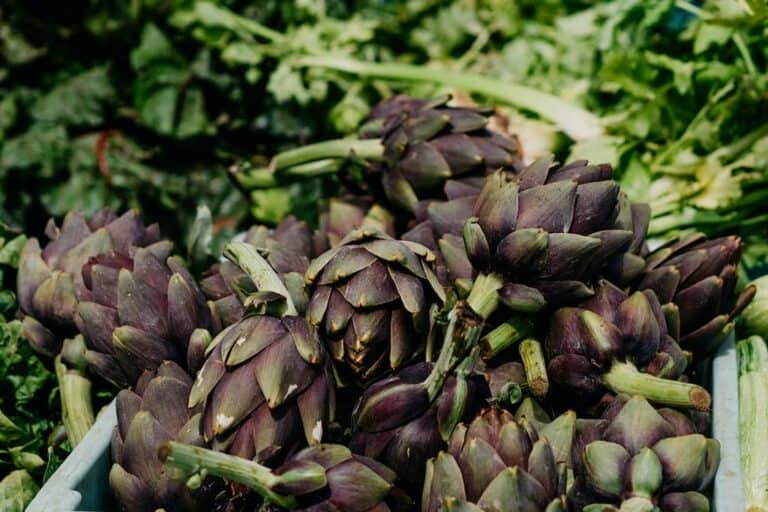Where Does Cantaloupe Grow Naturally? Does Cantaloupe Grow in the Wild?
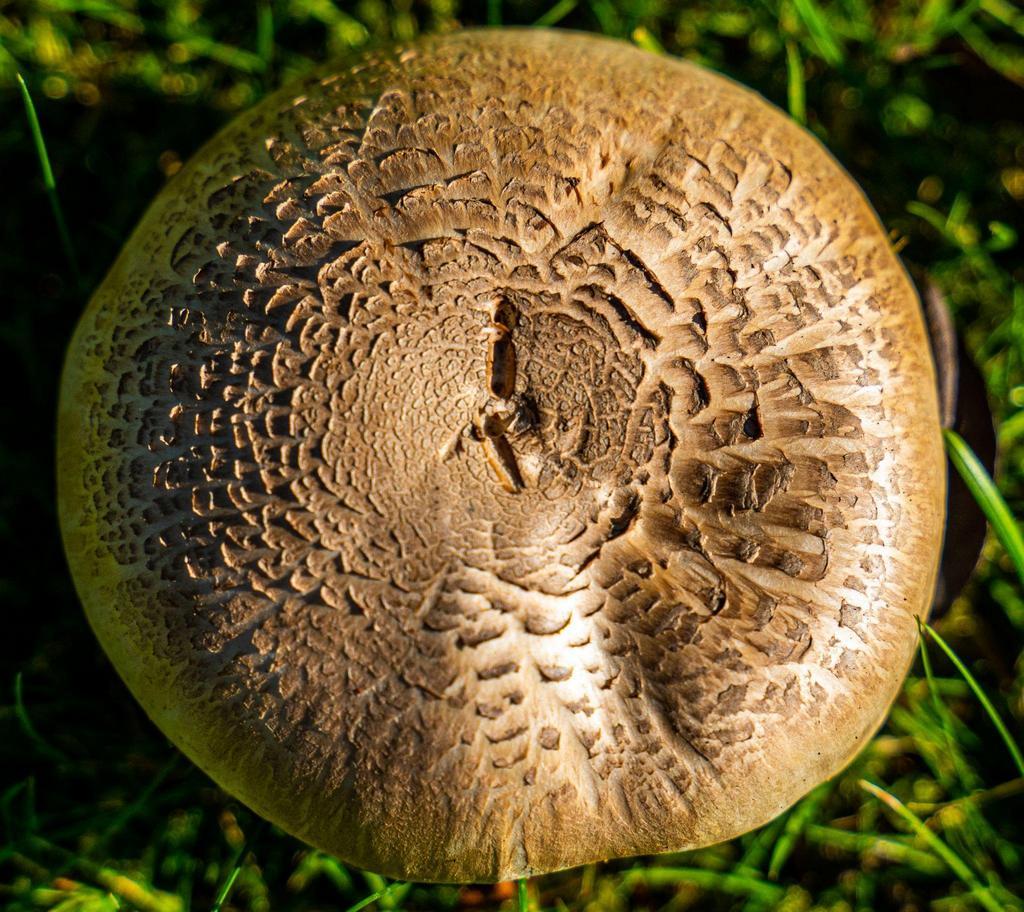
Cantaloupe is a sweet and juicy fruit that many of us enjoy on a hot summer day. Have you ever wondered where this delicious fruit comes from and if it grows in the wild? Is it a fruit that grows in the wild, or has it been selectively bred by humans for centuries?
The answers may surprise you. While cantaloupes are not typically found growing in the wild, they do have a rich history of cultivation that dates back thousands of years.
In this article, we’ll talk about where cantaloupes come from and how they got their name. We’ll also talk about the differences between wild and cultivated varieties and where cantaloupes are grown today.
By understanding the natural growing conditions of cantaloupes, we can better choose the right location and growing conditions to plant and care for these fruits.
Whether you’re a farmer who wants to grow cantaloupes on a large scale or a home gardener who just wants to grow a few plants for yourself, knowing how cantaloupes naturally grow can help you get a big harvest of tasty and healthy fruit.
So sit back, relax, and let’s dive into the wonderful world of cantaloupes.
History and Origin of Cantaloupe
When we think of cantaloupes, we often picture their sweet, juicy flesh and vibrant orange color. Only a few of us consider the fascinating history and origins of cantaloupe. Cantaloupes are in the botanical family Cucurbitaceae, which also includes cucumbers, watermelons, and pumpkins, among other popular fruits and vegetables.
Even though no one knows for sure where cantaloupes came from, they are thought to have been grown in the Middle East and Mediterranean for more than 4,000 years.
Some experts think that the first time cantaloupes were grown was in the ancient Egyptian city of Thebes, where they were grown along with grapes and figs. From there, the fruit spread throughout the Mediterranean, eventually reaching Europe and the Americas. In fact, the name “cantaloupe” is thought to come from the papal estate of Cantalupo near Rome, where the fruit was first grown in the 1700s.
Over time, cantaloupes became a beloved fruit around the world, prized for their sweet flavor and refreshing juiciness. Today, they are grown in many countries and enjoyed by millions of people worldwide. In addition to their culinary uses, cantaloupes have also been used in traditional medicine to treat a variety of ailments, such as constipation and high blood pressure, thanks to their high fiber and potassium content.
Does Cantaloupe Grow in the Wild?
Have you ever wondered if cantaloupes grow in the wild? If you’re picturing a wild cantaloupe patch that you might stumble upon while hiking, then the answer is no.
Cantaloupes, like most fruits and vegetables grown for people to eat, have been domesticated and selectively bred over thousands of years to make the sweet, juicy fruit we know today.
While cantaloupes don’t grow in the wild, their wild ancestors do. Wild cantaloupes, also known as “Cucumis melo,” are a type of melon that is native to Africa and parts of Asia. They grow on vines and have a hard, inedible rind that is not as sweet or juicy as the cultivated varieties we know and love. These wild cantaloupes are still found growing in some parts of the world, but they are not commonly consumed by humans.
Farmers must carefully choose and breed plants with desirable traits, like being sweet, juicy, and resistant to disease, so that they can grow the cantaloupes we eat today. These cultivated varieties are typically grown in warm, sunny climates with well-draining soil.
In the United States, the plant lives in areas such as California, Arizona, and Texas, as well as in many other parts of the world. They are usually planted from seed in the spring and then harvested in the summer months once they have ripened and reached their peak flavor.
Natural Growing Conditions for Cantaloupe
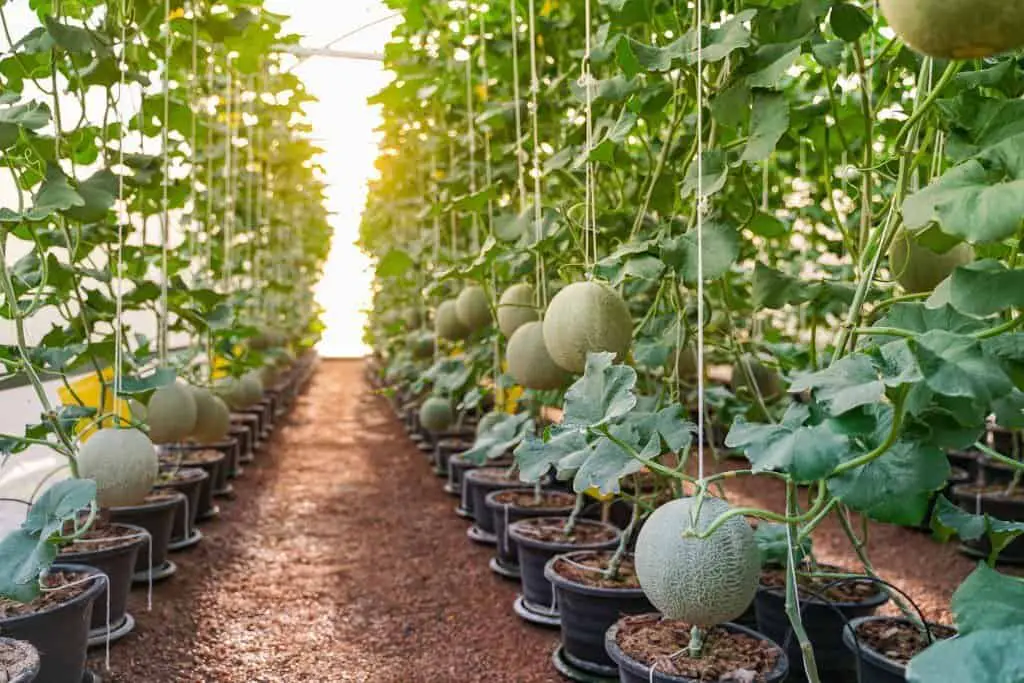
If you’re interested in growing cantaloupes, it’s important to understand the natural growing conditions that these plants thrive in. Cantaloupes are warm-season crops that require plenty of sunlight and heat to grow and ripen properly.
Cantaloupes grow best in soil that drains well and is full of organic matter, like compost or old manure. They also need a consistent supply of moisture throughout the growing season, but they don’t like to be waterlogged.
If you’re planting cantaloupes in an area with heavy clay soil, it may be beneficial to add some sand or other soil amendments to improve drainage.
In addition to soil and water, cantaloupes need plenty of sunlight to grow and ripen. They should be planted in a spot that receives at least six to eight hours of direct sunlight each day. If your garden is in a shaded area, you may need to consider planting cantaloupes in containers that can be moved to a sunnier spot as needed.
When it comes to temperature, cantaloupes prefer warm weather and don’t tolerate frost well. They are typically planted in the spring after the risk of frost has passed, and harvested in the summer when temperatures are at their highest.
If you live in an area with a short growing season, you may need to choose a cantaloupe variety that matures quickly or consider using season extenders, such as row covers or hoop houses, to protect your plants from cooler temperatures.
Cultivated Cantaloupe
History of Cultivated Cantaloupe:
As we’ve already said, cantaloupes are thought to have been grown in the Middle East and Mediterranean for more than 4,000 years. They have been selectively bred by humans for centuries to produce the sweet and juicy fruit we know and love today.
The ancient Greeks and Romans were particularly fond of the fruit, and they spread it throughout their empire. By the Middle Ages, cantaloupes had made their way to Asia and were widely cultivated in China and Japan.
Characteristics of Cultivated Cantaloupe:
Cultivated cantaloupes are typically round or oval in shape and have a hard, netting-covered skin that can range from pale green to orange. The flesh is juicy and sweet, and the fruit contains numerous small seeds in the center. Today, there are many different cultivars of cantaloupe, each with its own unique characteristics such as flavor, size, and color.
Growing Conditions for Cultivated Cantaloupe:
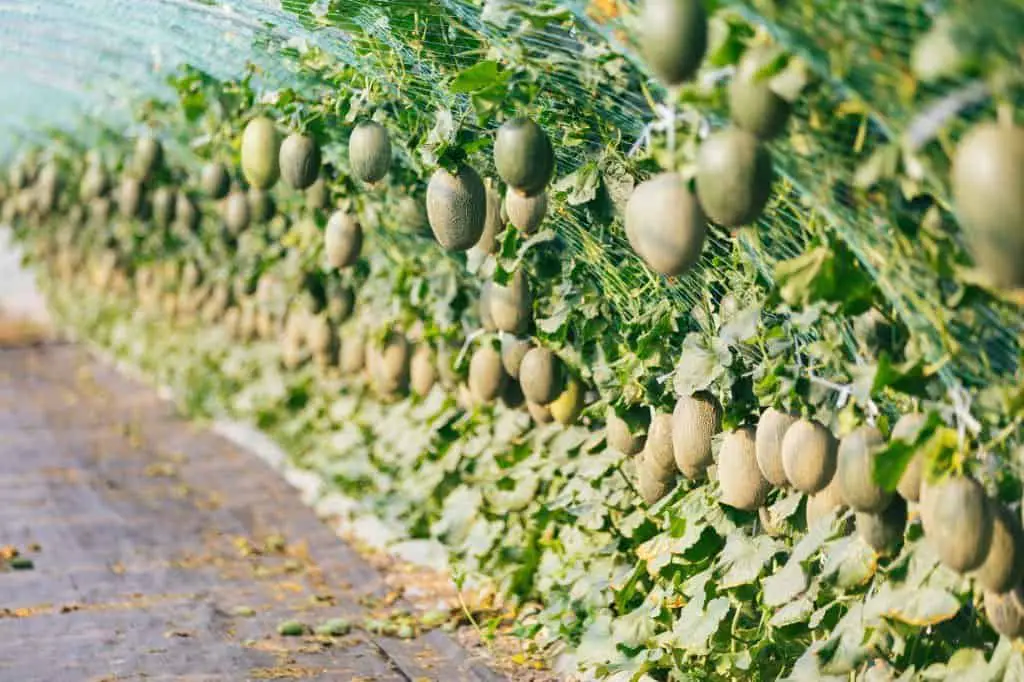
Cantaloupes are warm-weather crops that require a long growing season. They are typically grown in well-draining soil that is rich in organic matter, and they prefer a slightly acidic soil pH between 6.0 and 6.5.
The ideal temperature range for growing cantaloupes is between 75 and 85 degrees Fahrenheit, and they require plenty of sun and water to thrive.
Cantaloupes can be grown from seed or transplants, and they are often trellised to keep the fruit off the ground and reduce the risk of disease. In some areas, cantaloupes are grown as annuals, while in warmer climates they can be grown as perennials.
Differences Between Wild and Cultivated Cantaloupe
1. Physical Differences:
The physical differences between wild and cultivated cantaloupes are significant. Wild cantaloupes have tougher, less flavorful flesh and a thicker, less netted skin. They are also smaller and less uniform in size and shape than cultivated cantaloupes.
On the other hand, cantaloupes grown in farms have been carefully bred to have a sweet taste, juicy flesh, and a thinner, netted skin. They are typically larger and more uniform in size and shape than their wild counterparts.
2. Nutritional Differences:
The nutritional differences between wild and cultivated cantaloupes are also significant. Cantaloupes that grow in the wild have less sugar and fewer vitamins and minerals than cantaloupes that are grown on farms.
They also have a higher water content and less flesh per fruit. Cultivated cantaloupes, on the other hand, have been bred for their high sugar content, which makes them a good source of carbohydrates, as well as their vitamin C, vitamin A, and potassium content.
3. Culinary Uses:
Wild cantaloupes are rarely used in cooking or eaten as a fruit because of their tough flesh and low sugar content. They are mostly used for their seeds, which can be roasted and eaten like pumpkin seeds. Cultivated cantaloupes, on the other hand, are a popular fruit around the world and are used in many different culinary applications.
They are delicious when eaten raw, either on their own or in salads, and they can also be grilled or roasted. Cantaloupe is also commonly used in desserts, such as sorbets, ice creams, and fruit tarts.
Conclusion
In conclusion, while cantaloupes do not grow naturally in the wild, their wild ancestors, known as “Cucumis melo,” are native to Africa and parts of Asia. These wild cantaloupes are not as sweet or juicy as the ones we grow in our gardens, and people don’t often eat them.
People have carefully bred and raised these melons over time to make the sweet, juicy fruit we know and love today.
When it comes to the growing conditions for cantaloupes, they are warm-season crops that require well-draining soil, consistent moisture, plenty of sunlight, and warm temperatures to grow and ripen properly. They are typically planted in the spring after the risk of frost has passed and harvested in the summer when temperatures are at their highest. Farmers all over the world carefully choose and breed plants with desirable qualities so that we can eat this tasty cantaloupe fruit every year.
Whether you want to grow cantaloupes yourself or just like to eat them, knowing how they grow naturally and how they have changed over time can help you appreciate and enjoy them more. From their wild ancestors to the carefully grown varieties we know today, cantaloupes show how smart and creative humans are when it comes to farming.


